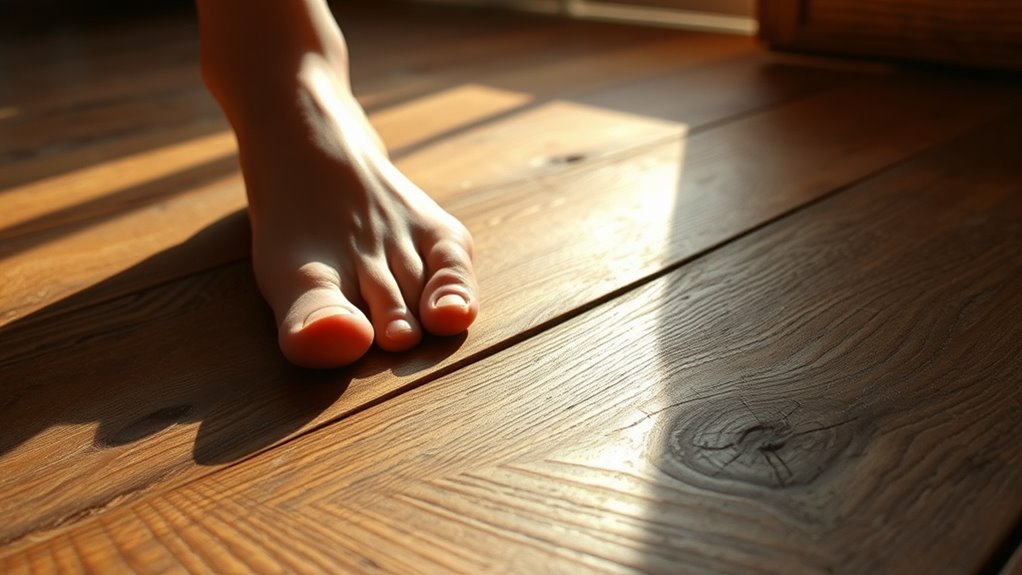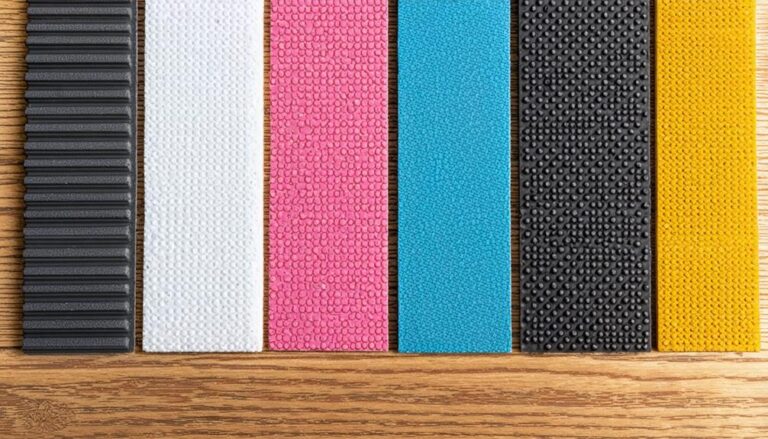Your floors creak when you walk because wood and other materials expand and contract, causing friction between boards or between the floor and subfloor. Loose nails, insufficient fastening, or subfloor warping can worsen this movement underfoot. Temperature and humidity changes also cause dimensional shifts, increasing noise. Minor squeaks might be fixed with simple tightening or lubrication, but more extensive structural issues may require professional assessment. Understanding these causes helps you identify appropriate repair options.
Common Causes of Floor Creaking
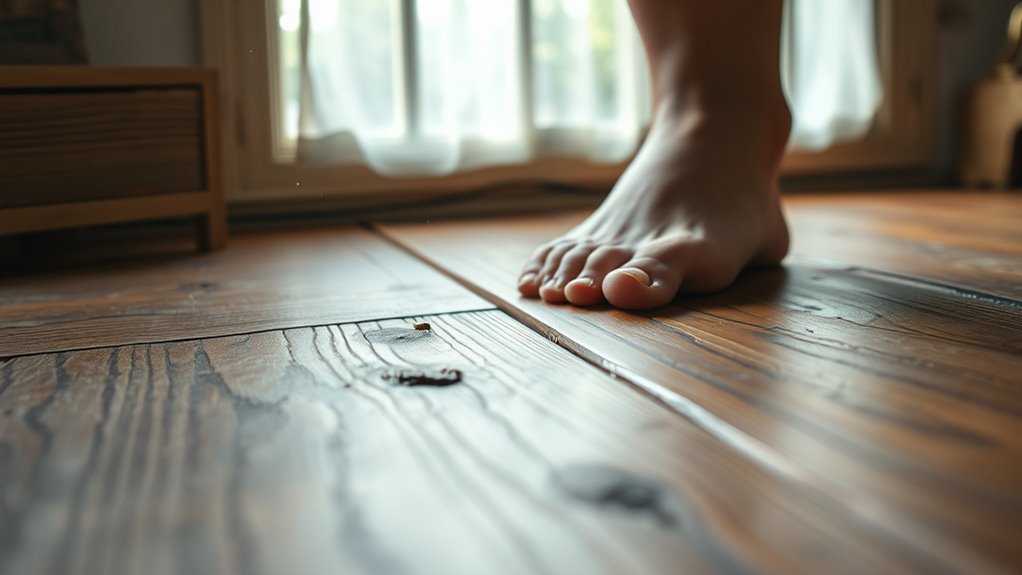
Although creaking floors can be annoying, understanding their common causes can help you identify and address the issue effectively. Typically, vloer materials such as hardwood, engineered wood, or laminate respond differently to environmental changes, expanding or contracting. When these materials shift, friction occurs between boards or between the floor and underlying structures, producing creaks. Installation techniques also play a critical role; improper nailing, inadequate spacing, or failure to secure flooring to joists can create movement underfoot. Additionally, insufficient acclimatization of floor materials before installation may cause dimensional changes post-installation, increasing noise. By focusing on the specific floor materials used and the installation methods employed, you can better pinpoint the source of creaking and take targeted action to restore quiet, stable flooring that supports your freedom of movement.
How Subfloor Issues Lead to Noisy Floors
When subfloor components deteriorate or are improperly installed, they often become the primary source of floor creaking. The subfloor materials—often plywood, OSB, or tongue-and-groove boards—serve as the foundational layer providing structural integrity to your flooring system. If these materials warp, loosen, or degrade, the connection between the subfloor and joists weakens, causing movement and friction that manifests as creaks. Additionally, insufficient fastening or gaps in the subfloor can allow panels to shift under load. You’ll notice this most when weight transfers during walking, stressing compromised sections. Understanding how these subfloor issues affect your floor’s structural integrity is essential for identifying noise origins and planning effective repairs, ensuring your floors remain stable and quiet without restricting your freedom of movement.
The Role of Temperature and Humidity in Floor Movement
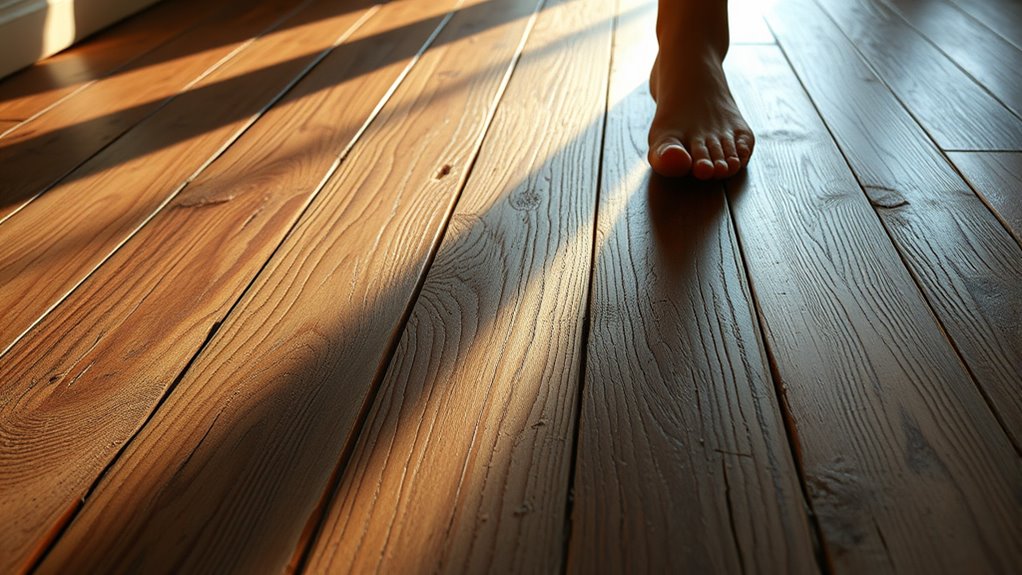
Subfloor issues often intensify as temperature and humidity fluctuate, affecting how floors respond to environmental changes. When temperature fluctuations occur, materials like wood expand and contract, causing subtle shifts in the floor’s structural alignment. Similarly, changes in humidity levels influence moisture content within the flooring and subfloor, leading to swelling or shrinkage. These dimensional changes can increase friction between floorboards or between the subfloor and joists, generating creaking sounds as you walk. Understanding this relationship helps you anticipate when floors are more likely to creak—typically during seasonal changes when temperature and humidity vary most. By recognizing how these environmental factors impact floor movement, you gain insight into the dynamic nature of flooring systems and why maintaining stable indoor conditions is essential for minimizing noise without restricting your living space’s natural variability.
Fixing Creaky Floors: DIY Solutions
If you’re dealing with creaky floors, there are several practical DIY methods to address the issue effectively. Quick fixes for squeaky floors often involve tightening loose boards or lubricating friction points. You can use screws, talcum powder, or shims depending on the cause. Precision in diagnosing the source guarantees lasting results, granting you freedom from annoying noises.
| Methode | Beschrijving |
|---|---|
| Screwing Boards | Secure loose floorboards to joists to stop movement and squeaks. |
| Talkpoeder | Sprinkle into gaps to reduce friction causing noise. |
| Shims | Insert between joists and subfloor to stabilize loose areas. |
These techniques require minimal tools and can be executed without professional help, making them ideal for quick, effective squeaky floor solutions.
When to Call a Professional for Floor Repairs
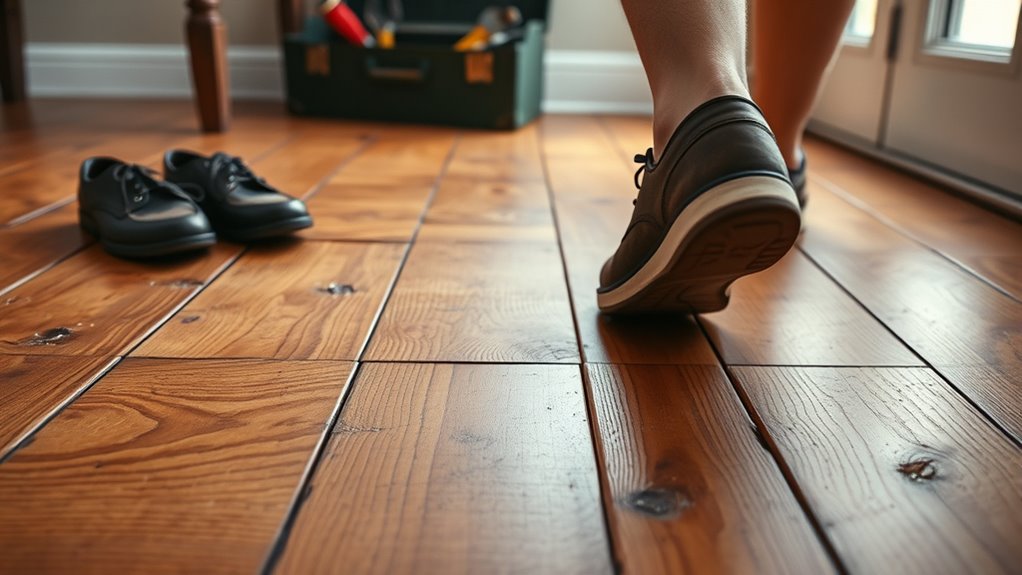
How do you determine whether a creaky floor issue requires professional intervention? Start with a thorough floor inspection to assess the extent and source of the creaks. If the noise stems from minor gaps or loose nails, DIY repair options might suffice. However, when creaks indicate structural issues—such as compromised joists, subfloor damage, or widespread instability—it’s prudent to call a professional. Experts use specialized tools to identify hidden problems and recommend precise repair options, ensuring long-term stability. Additionally, if your attempts at DIY fixes don’t resolve the creaks or you’re uncomfortable with structural repairs, a professional’s expertise is essential. Ultimately, timely professional intervention preserves your floor’s integrity and your freedom to move without disruption.

